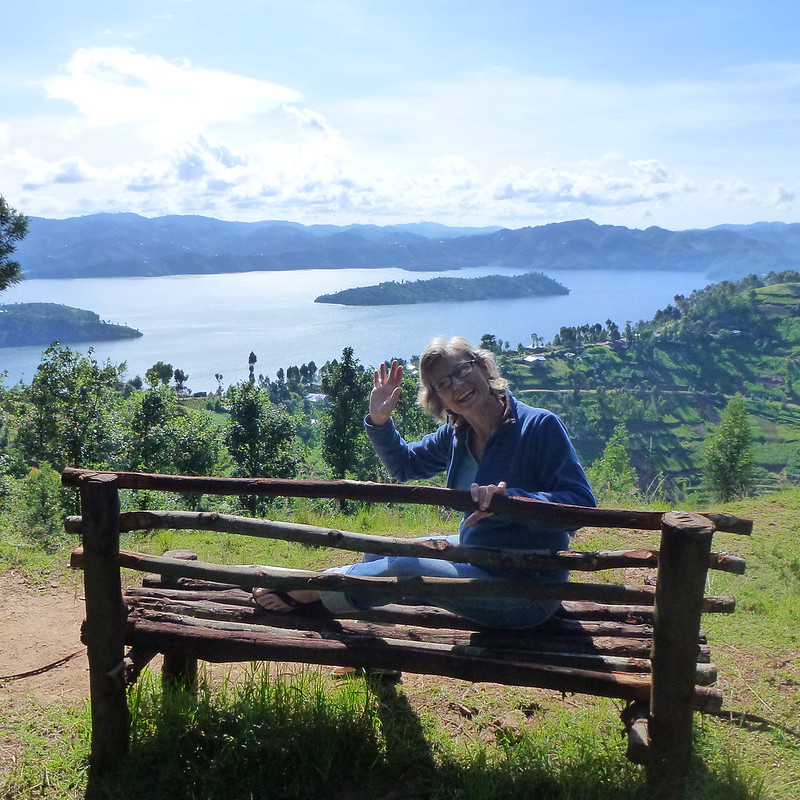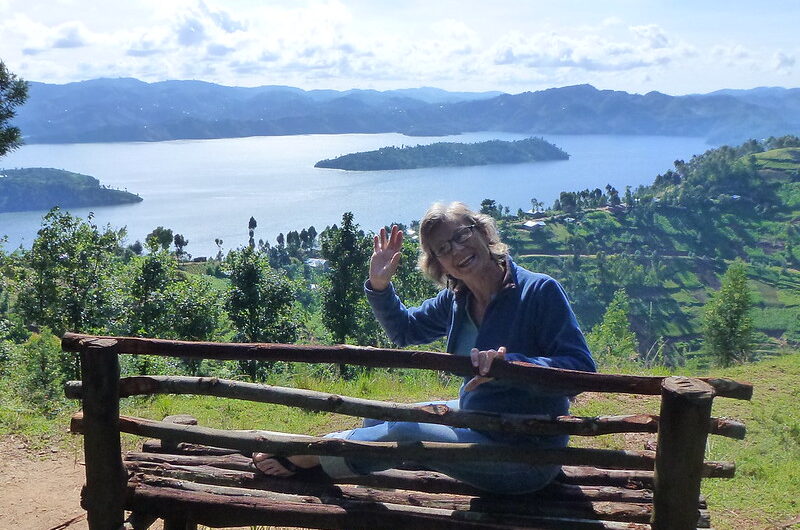Things To Do In Rwanda, Best Attractions and What To See & Cost
Rwanda is a tiny landlocked nation that is around one-third the size of Belgium, with an area of 10,169 square miles (26,338 square kilometers/2,633,759 hectares). Situated in the center of Africa, this East African nation is bounded to the north and northeast by Uganda, to the east by Tanzania, to the south by Burundi, and to the west by the Democratic Republic of the Congo.
The 1994 genocide in Rwanda, sometimes referred to as the “100 Days of Slaughter,” was a period of anguish whose scars are still visible on the people’s hearts. But the nation has shown optimism and resiliency, and it is now Africa’s comeback child, embracing tourism, economic growth, and national wealth.
Because of the hills, it is referred to as the Switzerland of Africa and is a “land of a thousand hills.” The nation is a “paradise on earth” because, despite its tiny size, it is beautiful and full of interesting things. Because most of the attractive items are near to one another, tourists explore the majority of the attractions without traveling too far.
The tourist industry in Rwanda has seen significant changes and has recovered. Don’t wait for someone else to tell you how beautiful our nation is. Explore this nation and take advantage of one of its most fascinating locations. The following are must-see locations in Rwanda that you should definitely include to your bucket list:
Volcanoes National Park
This 160-square-kilometer national park is situated in northwest Rwanda and has borders with Uganda and the Democratic Republic of the Congo. About 105 kilometers to the west of Kigali town, it takes two hours to get there by car. The renowned and rare severely endangered mountain gorillas call this park home.
You may get up close and personal with these mountain gorillas, sometimes known as Giant Apes, when you visit this park. You may enjoy amazing Rwandan gorilla safaris at the Volcanoes National Park, which is home to ten habituated gorilla families spread around the park, when you visit the Land of a Thousand Hills.
More than 75 animal species, including elephants, buffaloes, giant forest hogs, bushbucks, and spotted hyenas, are among the main attractions in addition to the mountain gorilla. More than 180 bird species may be found in the park, 26 of which are unique to the Rwenzori and Virunga mountains. Mount Karisimbi, Mount Bisoke, and the tomb of Dian Fossey are other attractions in addition to the animals.
Akagera National Park
This National Park is situated near the Tanzanian border in northeastern Rwanda. Its total size is about 1,122 square kilometers. About 135 kilometers separate it from Kigali town, which is two hours and thirty minutes distant. A network of lakes, including Lake Ihema, is one of the park’s intriguing features that is worth seeing.
Because of the diversity of animals, including Savanna elephants, buffaloes, and antelope species like waterbucks, topi, oribis, roan antelope, and elands, among others, this savanna park is well-known for game watching.
This amazing National Park is also home to spotted hyenas, giraffes, leopards, and zebras. Additionally, over 525 bird species have been identified in this park, including the shoebill stork, more than 44 raptor species, and unique species from the Albertine Rift such the Handsome Francolin and Rwenzori Turaco. Visit Akagera National Park and let your enthusiasm run wild for your rejuvenating and pleasurable game drives.
Nyungwe Forest National Park
Situated on Rwanda’s southwest border, Nyungwe Forest National Park spans 1020 square kilometers and is bounded to the south by Burundi and to the west by the Democratic Republic of the Congo. In order to diversify Rwanda’s tourist industry and lessen its reliance on gorilla tourism, it was founded in 2004.
The travel from Kigali town to the park takes around four to five hours. The park is home to more than 300 bird species, 16 of which are indigenous to the Albertine Rift, and 75 animal species, including 13 primate species, such as chimpanzees (of whom there are over 400 in this park), and black and white colobus monkeys.
Visitors to this park will be familiar with attractions such as the intriguing canopy walk. The Ngabwe path, Bigugu trail, Kamiranzovu marsh trail, Isumo waterfall trail, Source of the River Nile trail, Karamba birding trail, Imbaraga trail, Rukuzi trail, and Irebero trail are a few of the trekking routes in Nyungwe forest. This park also offers bird viewing and primate safaris.
City tour in Kigali:
Rwanda’s capital, Kigali.
Nighttime in Kigali City.
One of the most important destinations for visitors to Rwanda is Kigali city itself. The majority of the attractions, including chimpanzees and mountain gorillas in national parks, are accessible from the city. The United Nations named Kigali the most attractive city in Africa. It is among Africa’s safest and cleanest locations.
The city’s pleasant weather also makes it a destination where visitors may unwind. A city tour of Kigali provides a comprehensive understanding of both Kigali and Rwandan history.
You can visit the oldest building in Kigali, the Kandt House Museum; the first modern structure upon which the city was first built; the Inema and Ivuka Arts Centers; the Museum of National History; the Presidential Museum (where the 1994 Rwandan Genocide was sparked by the death of the former Rwandan President); the State House Museum; the Miyo Art Gallery; and the Kigali Genocide Memorial Center. Moviegoers may see 5-D films at the Kigali multiplex theater.
Rwanda’s Most Beautiful Locations
Volcanoes National Park and Nyungwe Forest National Park
Akagera National Park’s Lake Kivu Rwandan Lakes (also known as Burera and Ruhondo, Lake Muhazi, or Lake Kivu). Lake Mugesera and Lake Ihema):
There are several lakes in Rwanda, and visitors may take in the beautiful and tranquil scenery of these amazing lakes. Among these is Rwanda’s biggest freshwater lake, Lake Kivu. The finest time for travelers to unwind is on the beach and in its magnificent inland body of water. Canoeing, kayaking, and windsurfing are among the water activities that are practiced in this lake.
While in Rwanda, it’s also worthwhile to explore the country’s twin lakes, Lake Ruhondo and Burera. These twin lakes are used for fishing, boating, birdwatching, and canoeing. Another good lake choice in Rwanda is Lake Muhazi, which is 1.5 hours’ drive from Kigali.
This lake has beaches at Rwesero and Jambo. Visitors may have an exciting bird-watching experience at this lake, which is home to over 30 different kinds of birds. Camping, fishing, and boating are other activities.
Nyanza’s King Mutara III Rudahigwa Palace Museum:
King Mutara III Rudahigwa lived in this palace in Nyanza till his death. It is situated around 88 kilometers south of Kigali city and was constructed by the Belgian government in 1932. This museum serves as a cultural hub that offers insight into Rwanda’s 200-year royal legacy. The museum provides a picture of the King’s traditional residence in Rwanda.
During the 1994 Rwandan genocide, the majority of the museum’s traditional materials and artifacts were destroyed, while some were taken. Nevertheless, certain traditional elements were added to restore it to its true 19th-century condition, such as traditional cows, which are locally referred to as “Inyambo” since they represent Rwandese culture.
You may visit the Rwandan graveyards of King Mutara III and his beloved wife Rosalie Gicanda, which are located on a nearby hill of Mwima, while you’re visiting this museum.
Caves of Musanze:
Rwanda’s Musanze Caves.These caverns are located around one and a half minutes’ drive from Kigali town in the Musanze region, in the foothills of Volcanoes National Park. Out of the 52 caves in Musanze District that were surveyed, these are the most frequented. It has 31 entrances, the biggest one being 10 km wide, and is around 2 km long.
The bat colony in the Musanze caverns contributes to the unforgettable experience of visitors as they explore the tunnels. They were created by RDB in 2013 with the goal of expanding the range of tourism offerings and extending visitors’ stays in Rwanda. The fact that the cave resembles a home with several rooms and staircases is an intriguing detail about them.
Genocide monuments (genocide sites):
In remembrance of the 100 days of suffering after the 1994 Rwandan genocide, which claimed the lives of over 800,000 Rwandans, some locations were chosen to serve as their last resting places. For this reason, Rwanda now has eight (8) Genocide Memorial Sites.
Nyamagabe district’s Murambi Genocide Memorial Site, Gasabo district’s Gisozi Memorial Site, Gisenyi Memorial Site, Bugesera district’s Nyamata Memorial Site, Karongi district’s Bisesero Memorial Site, Nyarubuye Memorial Site, Nyanza Memorial Site, and Ntarama Memorial Site are a few of these. These locations include the clothing and bones of those who perished in the genocide in Rwanda. The memorial places serve as a reminder of the nation’s past.
The cultural village of Iby’iwacu:
This traditional community is situated near Volcanoes National Park in the Musanze area. Iby’iwacu, which translates as “Treasure of our home” in Kinyarwanda, is a cultural hamlet that showcases the customs of the Hutu, Tutsi, and Batwa tribes of Rwanda. They provide a number of tourism activities, such as teaching visitors how to cook traditional dishes and showcasing eight distinct traditional dances (including Ingoma, Ikembe, Amakondera, and Ingere).
Among other exciting activities, tourists take part in community walks, see the ancient king’s palace, visit traditional herbalists and clinics, and make Batwa pottery. At Iby’iwacu Cultural Village, culture and environment coexist.
Rwanda’s National Museum (Ethnographic Museum):
The museum is located near Huye/Butare, some 130 kilometers south of Kigali town, it was constructed in 1987 and opened in 1989. One of the six intriguing museums that make up the Institute of National Museums of Rwanda, it was the first to open in Rwanda and has been dubbed the greatest museum in East Africa for years.
Ethnographic, historical (the pre-colonial Rwanda), artistic, and archaeological items are shown in the museum’s seven galleries, which are arranged according to themes. The museum’s purpose is to present a tale of Rwanda’s social and cultural features via objects and symbols, such as the “Kagondo hut” and “Isinde,” among others.
In conclusion, Rwanda is endowed with a wealth of intriguing attractions, from man-made ones like museums to natural ones like chimpanzees and mountain gorillas, which pique visitors’ interest in traveling there.
However, the majority of visitors only know Rwanda for its mountain gorillas, leaving many other attractions underutilized. Don’t forget to explore the top ten destinations in this stunning nation to satisfy your curiosity and depart well satisfied.

